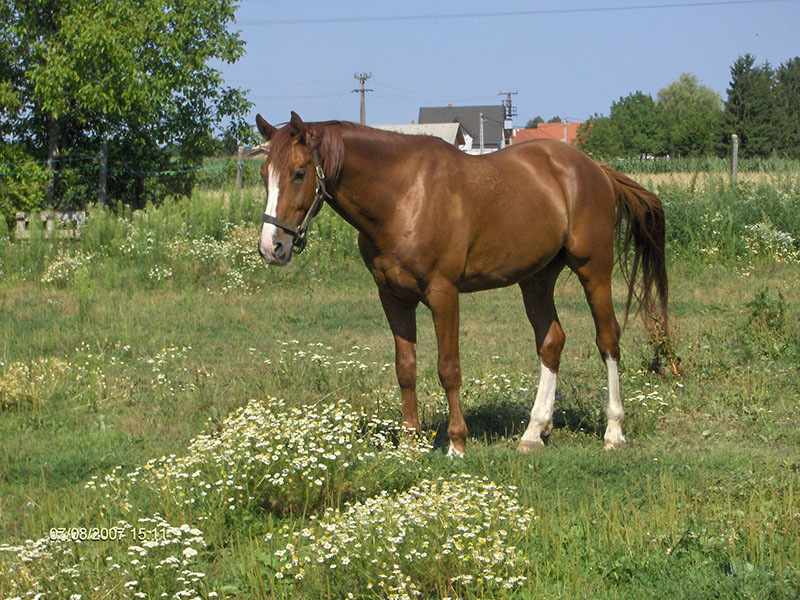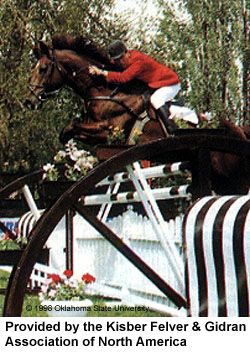Gidran Horses
An exclusively chestnut Hungarian Anglo-Arabian, the Gidran was developed at the Mezohegyes State Stud in 1816 with the import of the desert bred Arabian named Siglavy Gidran. He was believed to be of the Seglawi Jedran strain. In 1817, this chestnut stallion known as Gidran Senior, served Arabian, Turkish, Transylvanian, and Spanish-Naples mares. Six colts resulting from these mares went on to become chief stallions at Mezohegyes. In 1820, the Spanish-Naples mare, Arrogante, foaled the colt later to be Gidran II. He became the breed's foundation stallion. Until 1855 the dams of the Gidran chief stallions were 33% Arabian, 22% Transylvanian, 16% Spanish, 16% Nonius, 6% Hungarian native and 6% Gidran mares. Then English Thoroughbreds were increasingly introduced, in 1893 Thoroughbred stallions were used in three generations subsequently improving the breed. The Shagya Arabian stallions Gazal III and Siglavy II were than used as chief stallions in order to establish a more stable Anglo-Arabian type. The result was a heterogeneous type known for their excellent jumping and galloping ability.
The modern Gidran is a high quality riding and driving horse who have achieved recognition in international competitions. Particularly well known for their athletic ability, well-balanced temperaments, and sturdy builds. Gidrans excel in FEI disciplines where the breeds speed, endurance, agility, and courage are showcased.
An endangered breed, there are less than 200 Gidrans in the world. Sizes range 15.3 to 17.0 hands.
Accepted crosses: Chestnut Thoroughbred, Arabian, and Anglo-Arabians with a documented four-generation pedigree and minimum size of 15.2 hands.
All breeding stallions must be inspected and licensed by the breeding committee to be used for breeding.
References
Kisber Felver & Gidran Association of North America, 4256 Camino Perdido, Golden, Colorado 80403, (303) 273-9669



